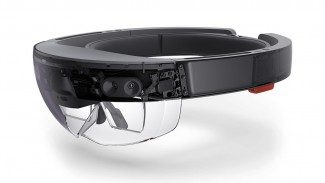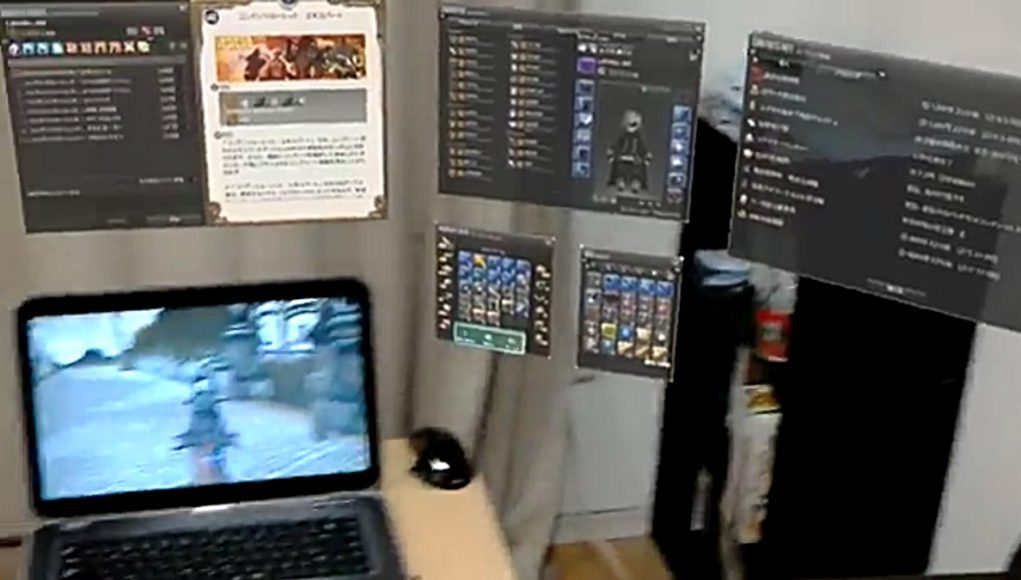Augmented reality is conceptually so broad, there’s almost no limit to what you could imagine doing with the technology. But rather than throwing out the playbook entirely, we’ll to our grand visions through useful incremental steps that begin with integration into existing content built around today’s paradigms. A concept video using HoloLens and Final Fantasy XIV, shows how AR could be incredibly useful as a ‘Second Screen’ companion for gaming and more.
While one day we’ll want AR games that are entirely based in augmented reality, today’s reality is that much of the world already has high-end, high resolution displays in their home, and powerful computers or consoles already hooked up to them to play all manner of games and content. Making use of those screens—especially while AR display technology and content design is still advancing—could be a great stopgap to a fully augmented futured.
The ‘Second Screen’ idea—putting additional content on a mobile device that’s relevant to what’s playing on the main screen—has been around since smartphone usage has become mainstream in the last decade. We’ve seen it attempted with games and film/TV content in the last several years, but it hasn’t quite caught on as something truly useful. AR, however, could change that.
Take this concept from Twitter user Tanufuku, who paired Microsoft’s HoloLens AR headset with the complex UI of Final Fantasy XIV.
HoloLens専用ゲームも楽しいけど、既存のゲームをHoloLens対応にしても面白いんじゃないかなーと思ってFF14で雰囲気だけ試してみた。UI系を画面の外に置くことで、よりゲームに没頭しやすくなるんじゃないかな?狭い画面でも広く使えそう。#HoloLens #FF14 pic.twitter.com/pjTrg0T2Z4
— たぬ 福 (@tanufuku) February 5, 2017
Tanufuku has reserved the laptop screen entirely for real-time 3D action, while exploding the game’s dizzying array of interface windows to the surrounding area with AR via HoloLens.
Now one might ask ‘Well then, why not just play the game on an AR screen too?’ Great question. The reason is that AR display technology is still advancing, and the laptop’s screen is almost certainly the superior display option for the time being.
For instance, while the video makes it seem like you’d be able to see all the AR windows in your periphery while looking at the main screen, the actual HoloLens field of view is around 35 degrees diagonally (making its available viewing area much smaller than most static displays that people use in their home today) which means if you replaced the laptop screen with an AR screen, you’d get clipping if you turned your head even slightly (and the AR screen would disappear completely from your field of view if you went to look at the surrounding AR windows).
Keeping the most important parts of the game on a real screen means the less important info (occasionally-access parts of the interface) will clip out of the field of view while you focus on the most important part of the game, but when you go to look at the AR windows, you’ll still be able to see that important real-time game action on the screen in your peripheral view.

Not to mention the fact that many users will have monitors or TV’s that far exceed the effective resolution of AR displays for some time, and, if you are running a contemporary game, there’s no reason to use a transparent display (which would degrade the quality of the content due to interference with the real world in the background).
So, leaving the most important part of the content (the real-time action) on a real screen—since they’re inexpensive, high-resolution, and we already own them!—while giving the less important parts of the game (like maps, inventory, menus, scoreboards, and more) some breathing room via augmented reality makes a lot sense for AR’s use as a ‘Second Screen’. Especially with some smart transitions between the real screen and the augmented space; you can imagine how, with some work, a game could allow users to seamlessly drag windows ‘out of their laptop’ and into augmented reality.







